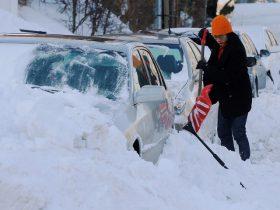By Vinita Goyal
A friend recently called me a super woman, and maybe the title fits: I am a super commuter, joined by about 29,000 others who commute 90 minutes or more each way to Silicon Valley every day.
Why do I super-commute? Because I love my Silicon Valley job, but I feel at home most in Berkeley, where I discovered myself and life in all its myriad hues.
I take two trains every weekday morning–BART and Caltrain. I am lucky because work is a 15-minute walk from Mountain View’s San Antonio station. Had my office been any further from the station, I would have looked for alternatives–maybe taking a third connection in addition to my second train. But that would add another 30 minutes to my dedicated 140–minute commute. For times when I need to attend meetings outside my office, I do rely on the transit network companies–like Uber and Lyft–for my last-mile connection. And I have almost come to accept the negative implications of that choice.
The last-mile connection, the bane of our transit system, is a tough nut to crack. Transit proponents have been calling attention to the ‘death spiral’ in local transit for some time now. Periods of service cuts and fare increases impact ridership that leads to more cuts and so on. The hyper growth of Ubers and Lyfts fill that gap and while these services satisfy transit riders like me, we are well aware of the serious ways in which they challenge the system.
The transportation infrastructure in the Bay Area could not function if everyone were to commute by car, through private use or via use of services such as Lyft and Uber. But car use is increasing in the Bay Area. Both for ethical and practical reasons, we must bring our attention to commuters who can’t afford to switch to cars and are affected by several cumulative issues—including the lack of affordable housing options in job-rich areas and an inevitable dependency on an unreliable public transportation system to navigate between home and work. For these commuters, navigating everyday can be a staggering set of circumstances.
How do we improve this situation? Several organizations are building support for a 2020 regional transportation measure that would raise up to $100 billion to ease transportation gridlock across the nine-county region. Those involved in these efforts include business and civic institutions affiliated with the “Faster Bay Area” campaign, and transit advocates, labor groups and environmentalists that are coalescing under the “Visions for Public Transportation” umbrella.
Here’s just one way a regional transportation funding measure could help: We need straightforward improvements in local bus operations that, for instance, can make transit frequent enough to help a high school student attend after school programs or help a senior to get to the local grocery store. More than 2 million young, elderly and disabled people ride transit in our region. In addition, local bus improvements could reduce occasional reliance on cars for 100,000 workers like me who usually take mass transit.
Whether one is a super-commuter or not, it’s clear to all Bay Area residents that we need an intentional, coordinated, regional effort to improve our buses, trains, light rail and bikeways to allow people to move between home, work and school more efficiently in the decades to come. And we need an ongoing source of funding for these improvements.
My organization, Silicon Valley Community Foundation, along with our nonprofit partners TransForm and Urban Habitat, recently convened a forum at which experts from the Bay Area, Los Angeles and Seattle–two cities that have passed similarly large-scale-regional transportation measures–discussed relevant lessons for the Bay Area.
One consistent theme throughout was for the measure to prioritize equity for lower-income residents and people with disabilities through affordable and reliable transportation choices. To quote a panelist, Thea Selby of SF Transit Riders: “Freedom of movement is a human right.” Both Los Angeles and Seattle prioritized bus operations and keeping fares low amidst other capital-intensive investments. A high-quality, accessible transportation system that reduced carbon emissions was a necessary component. But it was equally crucial that the system support the economic security of low-income people by providing access to good paying jobs.
The revenue source for the measure–currently a point of contention among the campaigners–tests our commitment to put equity in the center of several considerations within the regional transportation measure. Sales tax has historically been a primary revenue source in successful transportation measures over the years–including Los Angeles’ Measure M and Seattle’s ST3 as well–but sales tax is regressive. It by nature takes a larger proportion from the incomes of low-wage earners than from high-income people. The general public often misses this inherent inequity. Are there other alternatives for funding Bay Area transportation?
Ultimately, as in L.A. and Seattle, we will need a strong coalition both to win a campaign and implement the broader vision. Both the “Faster” and the “Visions for Public Transportation” campaigns must continue to seek compromise and alignment on several issues, including the extent to which funding will rely on progressive or regressive revenue sources.
The writer Toni Morrison talked about the need to engage in “constructive conflict,” one that “recognizes legitimate oppositions, honest but different interpretations of data, contesting theories” in order to win democratic struggles. I get up every morning to complete my “super commute” to do precisely that, engage in that conflict. I am happy about my role in advancing efforts to convene diverse stakeholder perspectives. I am not happy if I am complicit in thwarting mobility choices for people who are silently suffering. Improving regional transportation is a unique opportunity.
But we will not win a regional transportation measure in 2020 without considering the needs of the most severely impacted groups. We will win this democratic struggle only when we stand together with them.















